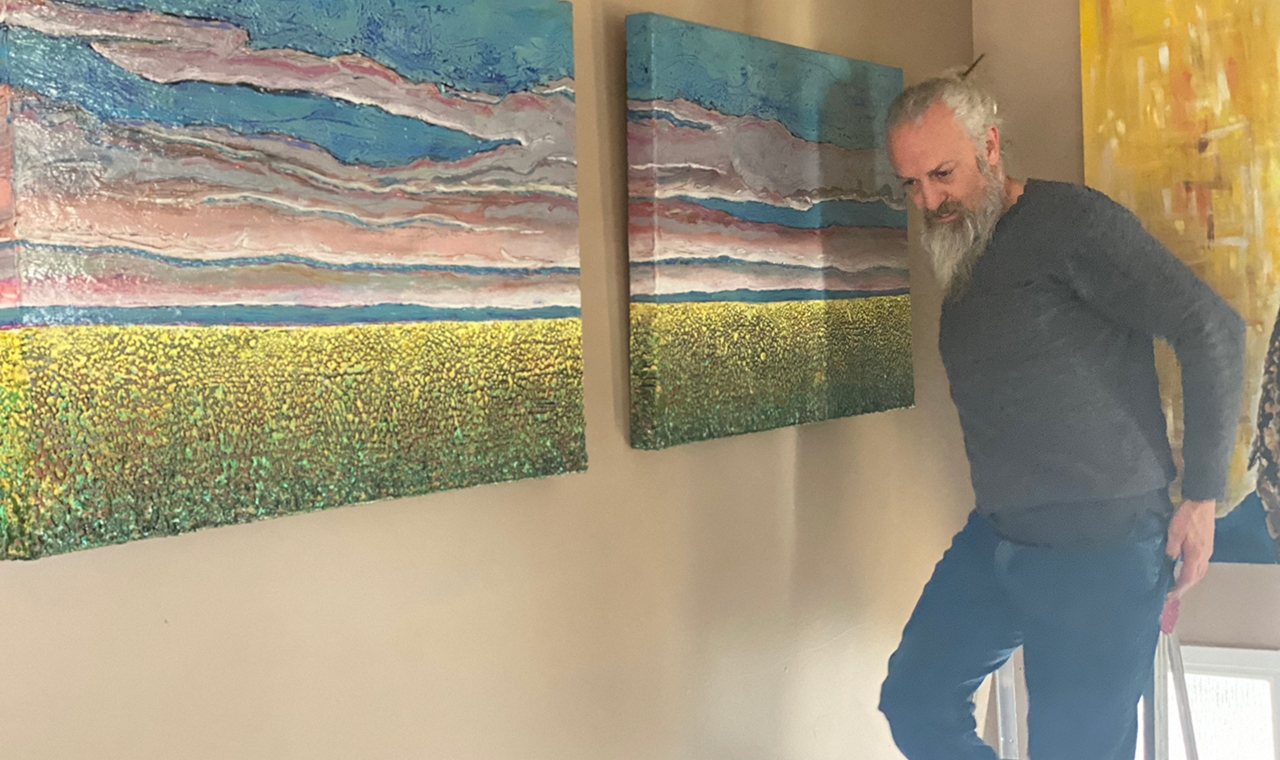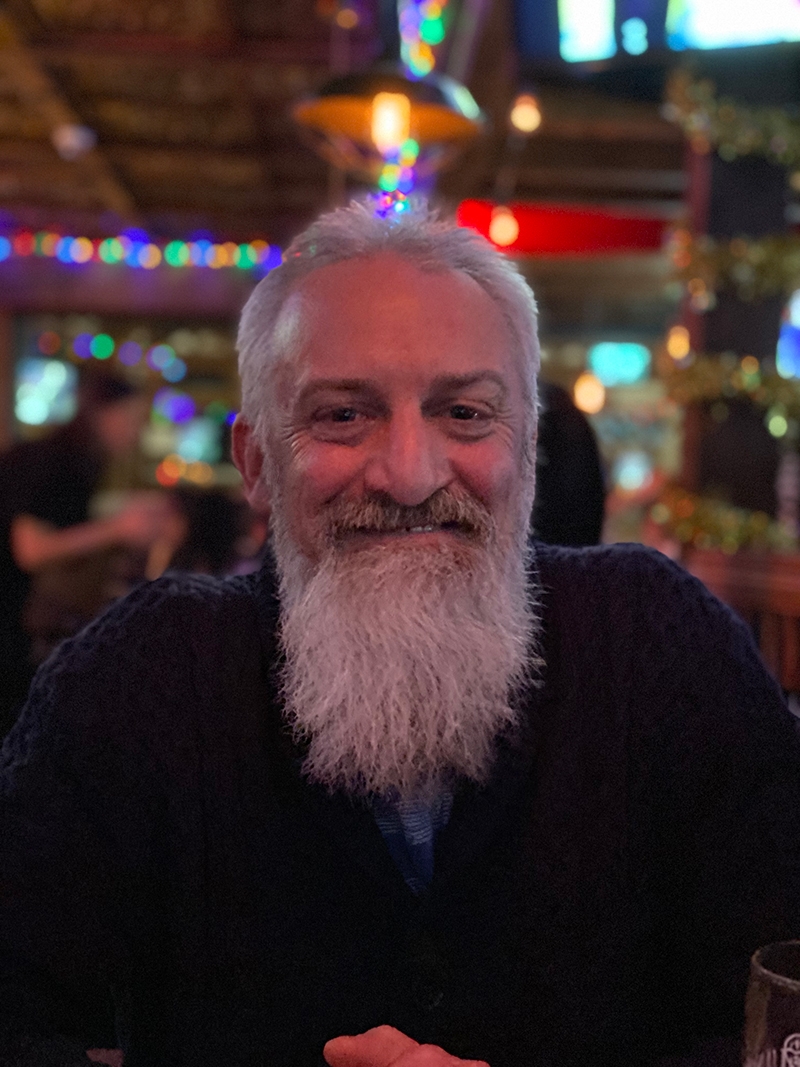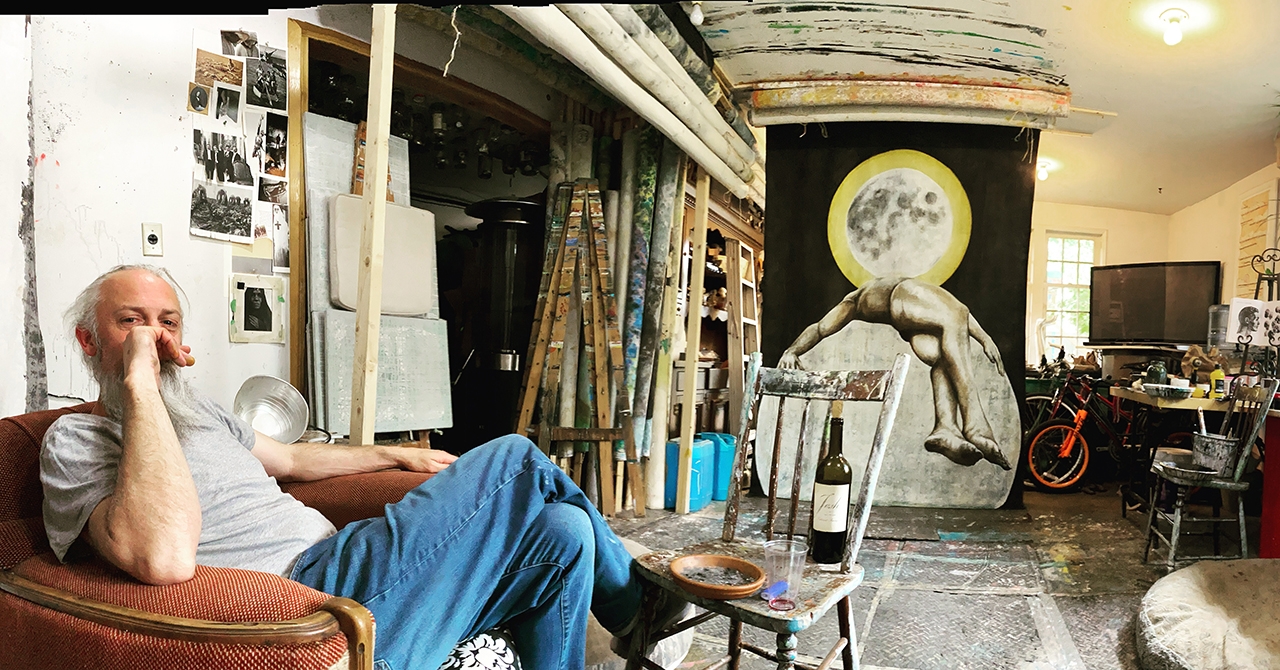"My people will sleep for one hundred years, but when they awake, it will be the artists who give them their spirit back."
- By Oral Tradition Attributed to Louis Riel
Edmonton’s thriving arts & culture scene is a big part of what makes it a great city to live in. However it is not atypical that the city’s artists are expected to share their work for free. This is common practice for art you see hanging in large buildings downtown - and any resulting sales provide a hefty commission for the owners of the space. Artists are expected to survive off exposure and the possibility of a sale. The reality is - while we value experiencing art - we’re not used to paying for that, and many people can not afford to buy art at a fairly valued price from local creatives.
When EndPovertyEdmonton opened its office in 2022, we knew we wanted to fill our space with local art and to ensure we moved forward in a good way that respects the contributions of artists and their role in creating a vibrant community. Through an Inclusive Economy initiative, we purchased a piece of art from local artist Terry P. Daly called “Bird’s Eye View” that currently hangs in our boardroom. As the title suggests, this work is a bird’s eye view of the heart of our iconic river valley. Terry P. Daly constructed the buildings in the mini diorama by carving up the leftover paint from his palettes. This detailed three dimensional work, and it is work, allows you to “walk” along neighbourhood streets, across bridges, through the legislature grounds, down the funicular, and into the green river valley. Seeing it in person is the only way to fully experience it.
We also enlisted Terry to curate our office space in 2023. EndPovertyEdmonton's Art Activation initiative facilitated collaborative opportunities for artists, bridging gaps between emerging talents and established voices. All artists were offered an honorarium and this rotating art gallery became more than an exhibit—it was a catalyst for dialogue, fostering connections and community engagement. This initiative showcased art's transformative power in fostering inclusivity, empathy, and understanding. It underscored the need to value artists not just for art's sake, but for the societal benefits arising from a thriving creative landscape.
We look forward to engaging Terry to curate our office again in 2024. With a new vision for supporting local artists, by sharing and promoting their work, and putting some money in their pockets. Keep an eye out as we’ll be profiling the local artists featured in our space throughout the year.
Artists featured in 2023 included:
REEM, @reemthevisualartist
Munderu, @munderuart
Jay Dontae, @jevonicarus
Mariam Qureshi, @artist.mariamqureshi, www.mariam-qureshi.com
Linda Wright, @LindaWrightartist
Sabria Allinoor
Jamelle Davis (JD), @itsJDArt, https://www.itsjdart.com/
Jolene Weller
Christian Peres Gibaut, @christianperesgibaut
Ering Pankratz, @eepankratz, https://www.erinpankratz.com/
Jade Munderu, @weepwhimsy
Tatyanna Francis, @onlyabeechtree
Terry P. Daly, @terrypdaly
About Terry P. Daly
Terry P. Daly is a visual artist who works in a variety of mediums, primarily acrylic paint and clay. His works are linked by their sculptural quality and his fondness for re-purposing found objects, especially those uncovered during walks near forests and bodies of water. He often carves into paint to produce ribbons and shapes, and he has even chopped up a lot of maps in order to fashion landscapes.
Terry’s last two solo exhibitions, 2021’s Facing Change: portraits of pain, purpose, perspective, and 2022’s Prefigurations, represent a change in direction toward massive and compelling portraits and figures. The works reflect an increasing desire to underscore aspects of social justice within his art, especially during these times of pandemic loss, environmental devastation, and increasing uncertainty facing local and global communities alike.

Interview with Terry P. Daly
Your work is always changing and evolving. What’s been informing your recent work?
During the initial months of the pandemic, I feel that many of us started seeing our surroundings in a new way. Maybe we were thinking about what could be: not battling traffic during rush hour, empty streets allowed emergency vehicles to get where they were going swiftly; our perception of work that was of value shifted, to that of those who provided truly essential services, such as access to food and healthcare.
During that time I was worried and thrilled and inspired. I was painting the faces of healthcare workers, with deep lines from fatigue and burst blood vessels where masks clung to faces for hours on end. The faces of people facing so many unknowns, and so many risks, and watching the decline of once healthy and spry people on a scale not likely witnessed prior.
You have been hosting a group exhibition called Making Space? How did that come about?
During the pandemic, I began gathering semi-regularly with two artists I had met through a mutual friend. I spend a good deal of time working on the yard during the summer, and even more so that year. It was so enjoyable to be outside, traffic sounds dampened with fewer people on the roads. We would mill about and feel inspired by the energy of the yard and the energy that grows when like minded individuals start bouncing ideas. We talked about showcasing artworks outdoors. It was the only reasonable path forward. Artists tend to have “other” jobs. Jobs that pay the bills, because we’ve chosen a profession that is not necessarily valued monetarily. Fair prices for the efforts we make are rarely realized. It is difficult to find a steady stream of new buyers, because people are limited when it comes to wall space and limited by the real cost of materials, let alone the cost of the time going in to a painting, the time that also includes reflection and experimentation, and all the experiences over the years that have surfaced in order to make something beautiful or compelling or desirable.
Opportunities to earn money were very few and far between. Indoor exhibitions were out of the question. Many potential buyers were not working themselves.
So through that spurt of creativity we vowed to hold a group exhibition outdoors, in that very garden, with measures in place that the outing would feel as safe as possible for the artists and viewers alike.
How did you find artists to participate in the Making Space exhibitions?
We put out a call for artists, ensuring that participation would be low-barrier: come to a meeting, see the space, envision the pieces you want to bring, commit to the dates and the hours and invite everyone you know. Bring easels if you have them, get help with hanging if you need it, even help with transporting the work, seek the opinions and feedback of the other artists at any point. Leave inspired.
Tell us about that first exhibition.
It wasn’t the first time that I had put up work outside, because I had done so at previous shows, but they had never been exclusively outdoors. And they had never been so late in the year, and that October weekend of that first exhibition was extremely cold. We stayed warm by taking indoor breaks in the studio and family and friends brought their outdoor fire rings and propane heaters so we could distribute heat throughout the yard. We danced to keep warm to live musicians who persisted playing, even with frozen fingers. The event was warm and inviting despite the chill. It was friendly, welcoming, it was a space that had been generated by the presence of so many creatives, brought together by the necessity of sharing their work and potentially finding a new audience for it.
There was a woman who wandered into the yard who looked cold, and hurt. She had a very strong reaction to some of the portraits. I invited her to warm up and asked if she could reach out to family. They had been looking for her for days and came for her right away. That encounter marked the culmination of the event for me. There are so many reasons why someone may be wandering the streets in Edmonton, and with some compassion and empathy, Edmontonians can connect and can help and can learn from each other. The exchanges we had were timely and I began thinking about the harms of colonization in earnest.
I have this beautiful yard to share, this art to share, these ideas and naturally find myself reacting to the difficult themes that come up when one’s awareness is opened to the realities of their surroundings, and the colonial mindset that granted me the privilege to live and love here on beautiful Treaty 6 territory.
Why do you think so many artists experience poverty?
When the creative process is devalued, we accept that artists will be poor, and their choice to share their works will be considered to be a narrow decision: “Oh, you pursued fine arts, you knew you wouldn’t be compensated well, so you, you deserve to struggle.” But we could instead recognize that our quality of life improves when we are surrounded by art and engaged by representations of difficult topics and aspects of beauty alike. No one actually enjoys living in a community devoid of art. As humans, we enjoy being challenged, we find many artistic expressions to be both valid and full of potential and even essential to our wellbeing. Artists bear witness and reflect back difficult truths. We have something to say, but leave the interpretation up to the eyes of our viewers, as long as we can get those eyes.
As the curator of the Art Activation initiative at EPE, is there anything you want to share?
This art program allowed me to spend more time working with other artists, encouraging them to produce work to share with a wider audience. It allowed them to add an exhibit to their resumes, and to get paid a fair honorarium to hang their work. It brought disparate works together. It gave opportunities for emerging artists and talented established artists alike to showcase where they have been and where they are going. The contributions were thoughtful and I enjoyed hanging them in a way that would generate appreciation by the onlookers. Thank you for this opportunity, on behalf of myself and the 12 artists who participated this year. Thank you for considering the impact that this rotating gallery of art could have on the artists, the staff, and the visitors, and providing us the space and the compensation so that it would be a feasible endeavour for everyone involved.


